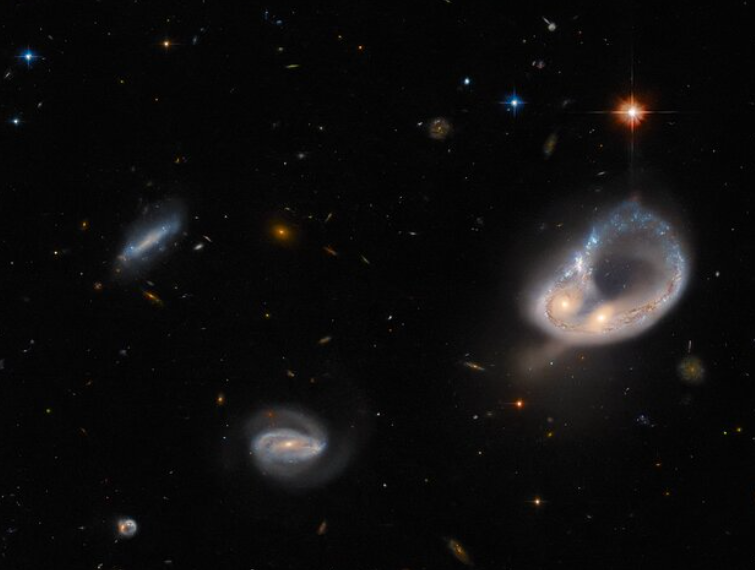NASA's Hubble Space Telescope has caught a glimpse of merging galaxies that seem to be intertwined with each other.
The merger called Arp-Madore 417-391, is reportedly located in the Eridanus constellation. It's estimated to be 670 light-years away from the Earth.
Two Merging Galaxies in an Embrace

According to a report by Space.com, NASA recently discovered that a pair of merging galaxies appear to be forming irregular shapes and patterns.
The twisting behavior of the merger is the result of the gravity that exists on them. In a statement, the Hubble team explained that the two entities are colliding side to side.
As far as galaxies are concerned, the unusual "dancing" behavior of the galaxies can be attributed to their structure. For instance, the Apr-Madore 417-391 could be a by-product of the existing "ring" galaxies.
It's bizarre to spot this astronomical sighting knowing that these are less than 0.1% of the galaxies in the universe. Up to this point, the experts argue about their formation and what leads to it. The galactical collision may have something to do with this phenomenon.
'Intriguing Targets' Could Help James Webb Space
Astronomers believe that by studying these "intriguing targets," they could have a strong lead about the whereabouts of the other galaxies that are drifting across space.
The latest observation is crucial since it serves as a follow-up conclusion for the findings of the James Webb Space Telescope.
Other than the concurrent merger, the team behind Hubble also uncovered Wild's Triplet, another set of interacting galaxies within Arp-Madore. However, it's different from the Arp-Madore 417-391.
In taking the best shots of the galaxy merger, the scientists used the Advanced Camera for Surveys which excels in spotting distant galaxies from the past and even the galaxy clusters.
The James Webb Space Telescope is the better observatory that will be perfect for exploring deep space. With its improved sensors, it can take a peek into the infrared spectrum to snap more vivid photos of the galaxy merger.
Related Article : NASA's Hubble Space Telescope Releases New Image of Dark Cobwebs That Can Help Investigate Dark Matter
Largest Galaxy in Existence
Tech Times reported on Friday, Dec. 2 that astronomers observed the largest existing galaxy in the whole universe. It is too far from the planet, according to scientists.
At a whopping distance of 16.3 million light years from the Earth, this is the most massive galaxy discovered. Astronomers called this enormous radio galaxy "Alcyneus," a primitive galactical structure in this era.
It is estimated that the galaxy is 240 billion times heavier than the Sun. Deep within its core lies a supermassive black hole which is believed to be 400 million times the size of this glowing yellow body. It's so big that it can consume hundreds of black holes in one gulp.

![Apple Watch Series 10 [GPS 42mm]](https://d.techtimes.com/en/full/453899/apple-watch-series-10-gps-42mm.jpg?w=184&h=103&f=9fb3c2ea2db928c663d1d2eadbcb3e52)



